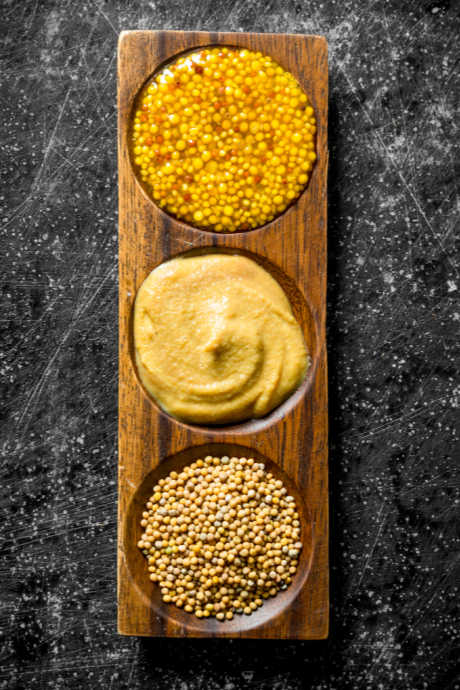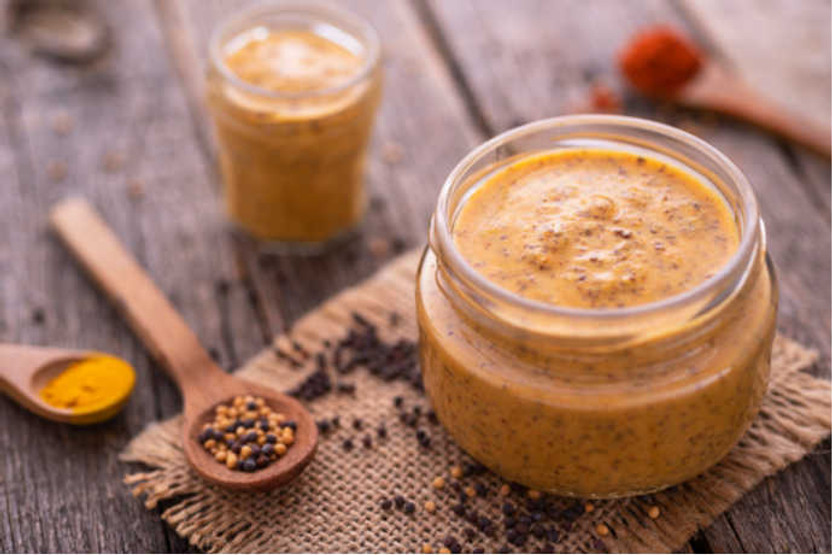Homemade Mustard: From Mild to Wild
Posted by Julie on May 15th 2020
Chances are good you’ve got a squeeze bottle of yellow mustard in your refrigerator right now. You may even have a jar of Dijon or spicy brown mustard too. But have you ever tried making this essential condiment on your own? It’s not just for hot dogs and hamburgers; mustard is a key ingredient in dressings and sauces. It’s also a delicious dip for homemade pretzels and a savory spread for sandwiches. We think you’ll be pleasantly surprised by how easy it is to make homemade mustard.
Mustard’s Essential Ingredients
Combine mustard seeds with liquid, and you’ve got mustard. It really is that simple. Of course, it’s the variety of mustard seeds, the type and temperature of liquid, and other added ingredients that make different kinds of mustard unique. There are white or yellow, brown, and black mustard seeds. The darker the color, the more intense the flavor.

But the heat of mustard isn’t just determined by the color of the seeds you use. The acidity and temperature of the liquid affects the enzymatic reaction that takes place. Acidic liquids like vinegar, wine, and lemon juice inhibit the reaction, while neutral liquids like water promote enzyme activity. Warm liquids inhibit activity, while cold liquids accelerate it. In fact, the nature of these reactions is how mustard got its name: The Latin phrase “mustum ardens” means “burning must” and refers to the combination of ground mustard seeds with grape must, or unfermented grape juice.
However, making mustard with acidic liquids doesn’t mean they won’t be hot; instead, the heat will last longer, as the reaction takes place over a greater duration. On the other hand, mustard made with a neutral liquid like cold water will have a serious kick that dissipates fast. Serious Eats sums it up well by concluding that mustard made with yellow seeds and vinegar is on the mild end of the spectrum, while mustard made with brown or black seeds and cold water will be on the hot and spicy side.
Types of Mustard
Now that you’re clear on what goes into mustard, the various types of mustard should start to make more sense. Serious Eats goes into greater detail on these varieties, but we’ll summarize them here.
Yellow mustard: Made from ground yellow mustard seeds, turmeric, vinegar, and water, yellow mustard is a classic condiment for hamburgers and hot dogs.
Dijon mustard: First created in the mid-1800’s in France, modern Dijon mustard is made from brown or black mustard seeds and white wine. The combination of more intense mustard seeds and a slightly acidic liquid is what gives Dijon mustard its kick.

Spicy brown mustard: Also known as deli mustard, spicy brown mustard is made from brown mustard seeds and less vinegar than yellow mustard, giving it a more intense flavor. The seeds are also more coarsely ground than in yellow or Dijon mustard.
Whole grain mustard: Even more thick and coarse than spicy brown mustard, whole grain mustard is made with brown or black seeds and wine, similar to Dijon mustard. The difference lies in the texture.
Hot mustard: Often used as a dipping sauce for Asian food, hot mustard combines brown or black mustard seeds with cold water for maximum heat and intensity.
Honey mustard: While any variety of mustard can be combined with honey for a sweet and spicy flavor profile, yellow mustard is most common. Mix equal parts mustard and honey to create honey mustard for a spread or dipping sauce.
Mustard Recipes
You can wing it with your mustard making. Experiment with various types of seeds and seed combinations, grind them to a fine powder or leave them coarse. Try using different varieties and amounts of vinegar, wine, beer, and cider to activate the enzymes in mustard seeds and create a spread or paste. Depending on your desired flavor intensity, allow your mustard to rest and mellow for a day or two, or start dipping and spreading right away.
You can also follow a recipe, if you’re not yet ready to go it alone. We’ve gathered a few ideas for you to try.
Homemade Yellow Mustard
This recipe from Leite’s Culinaria is a great place to start, since yellow mustard is the mildest variety, and it’s ideal for mixing with honey. Combine dry yellow mustard powder with turmeric, paprika, garlic, and salt in a saucepan with water. Whisk all the ingredients together and stir frequently over medium-low heat. After reducing for up to 45 minutes, whisk in vinegar and cook for up to 15 minutes more. Let the mustard cool, and then store it in the refrigerator. The initial taste will be strong, but it will grow milder over time.

Homemade Dijon Mustard
Make your own Dijon mustard with this recipe from The Spruce Eats. Be forewarned, the inactive prep time will take days, but the recipe itself is a snap to make. Start by soaking yellow and brown mustard seeds with white wine, white wine vinegar, and powdered sugar. Let them soak for 48 hours, and then blend them with kosher salt for about 30 seconds. Store the mustard in the refrigerator for 24 hours before serving.
Chinese Hot Mustard
Ready to turn up the heat? This recipe from The Woks of Life comes from their family’s Chinese restaurant, so be assured it’s authentic. In fact, we bet it will be even better than the packets of hot mustard that come with Chinese takeout. Simply mix mustard powder (such as Colman’s), salt, and white pepper with hot water to form a paste. Then whisk in vegetable oil and rice vinegar, and allow your mustard to rest for ten minutes before tasting. You can omit the vinegar if you like it hotter, or you can add a bit more oil and vinegar to thin out your mustard.
 Free shipping over $49
Free shipping over $49










